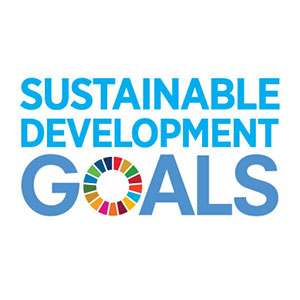
On September 25, 2015, the UN General Assembly adopted a set of 17 goals as a part of its new Sustainable Development Goals. These SDGs, also known as Global Goals, present a “plan of action for people, planet, and prosperity”- as mentioned in its preamble. The 17 SDGs and its 169 targets attempt to build on UN’s Millennium Development Goals (MDGs) and fill any vacuum that might have been left by them. These goals, which officially came into force on 1st January 2016, provide the member nations with a timeframe of 15 years to channel their efforts to eradicate acute poverty, reduce inequalities and act favorably to protect the environment and deal with the menace of climate change. All the 17 goals can be viewed below-

Imagine what it would like if UN manages to meet these goals within the stipulated period! ‘Utopian’ might be the appropriate word to describe such a world. So, how far are we from actualizing our utopia? Or is it just a sweet dream? To arrive at a conclusive answer, presently, is out of the question (it’s only 2017!). However, what we can attempt to do instead is to see whether these blueprints are promising enough or not.
It’s not an easy task to craft something so comprehensive, with inputs from public, businesses and developing and developed nations- and for that matter, kudos to U.N for taking into account almost every perspective. But here’s the thing, in going all out, the U.N has ended up an overwhelming list of targets (169). In comparison, MDGs had only 18 targets! To meet these targets would mean entailing a cost of $45 trillion, as estimated by The Economist. Since the costs are high, it is only natural that different groups would prioritize the targets closest to them. So, while groups working for child welfare would like to focus on such programs, businesses would like to work on sustainable energy programs which would yield returns. Such clashes of interests are inevitable as all targets are equally important. To avert this, it requires proper governance.
Proper governance is a must if the SDGs are to be achieved. Considering that the SDGs takes a multi-stakeholder approach, the need for “win-win cooperation” from all the stakeholders cannot be overstated. To meet the goals, several trade-offs and clashes of interests are bound to happen. As such, it is the national governments who are expected to step in and lay out a proper flowchart of actions (which the SDGs have failed to do) and ensure that all the stakeholders coordinate with each other in an orderly fashion. For that, the governments might be required to incentivize participation from the private sector and more importantly, ensure that there are responsibility and accountability for the actions taken by the various members. Only when the groups are made to feel responsible and held accountable for their actions will they take prudent decisions. The same needs to be done for member countries too because U.N SDGs are not legally binding; hence governments have to manage that part as well.
To add to the complexity of government’s role is the fact that Global Goals are pretty ambiguous. For example, one of the targets stated: “By 2030, ensure that all girls and boys have access to quality early childhood development, care and pre-primary education so that they are ready for primary education.” Here, it’s unclear as to what is considered ‘quality early childhood development’, how to measure it and what the UN considers important- quantity or quality of participation. Also, it is important to note that SDG includes not only the unachieved MDGs but several new targets as well which don’t make sense. This way UN would be essentially diluting its resources.
The initial reports on the success of SDGs were dampening as UN Secretary General reported that efforts to meet goals were lagging. However, with its attempt to reach out to the youths and starting an online course for spreading public awareness, UN is gearing up. UN SDGs are ambitious but so does the UN appears.
By Arushi Sharma
Image Source: Centre For Global Development
